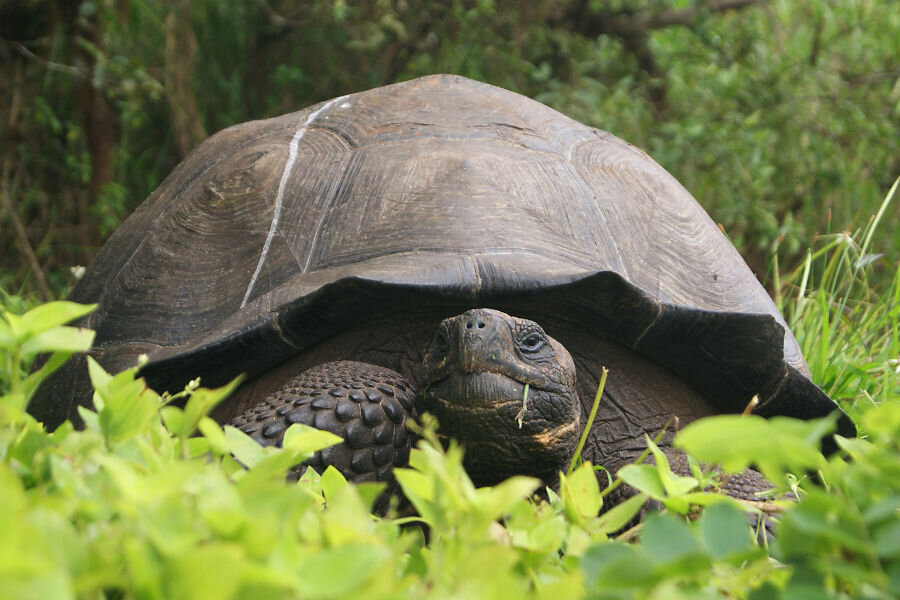Scientists discover new Galápagos tortoise species, the first in a century
Loading...
Scientists have identified a new species of giant tortoise on the Galápagos Islands, the Ecuadoran archipelago famed for its stunning landscapes, lush biodiversity, and, well, tortoises.
It is the first time in more than a century that such a discovery has been made, according to The New York Times. The findings appeared Wednesday in the journal PLOS ONE.
Two tortoise colonies reside on Santa Cruz Island, the second largest in the Pacific island chain. Scientists long thought that the turtles that lived in the lowlands, which number about 250, were the same species as the much larger colony that resides in more elevated areas.
Genetic analysis not only proved them wrong, but also revealed that the two populations are not even particularly closely related, having evolved millions of years apart, Adalgisa Caccone, an evolutionary biologist at Yale University and the study’s lead author, told the Times.
Scientists named the new tortoise Chelonoidis donfaustoi, after a retired Galápagos National Park ranger Fausto Llerena Sánchez, known to his friends and colleagues as Don Fausto, Scientific American reports.
“This guy dedicated his life to them,” Dr. Caccone told Scientific American. “All the other [tortoise] species are named by scientists for scientists or explorers, but no species has been named after a person from Ecuador.”
C. donfaustoi is the 15th confirmed tortoise species to be discovered on the islands, the BBC reports, an event few had thought possible after the 2012 death of Lonesome George, the last remaining tortoise on Pinta Island.
Before the century-old tortoise died, conservationists had unsuccessfully attempted to breed George, a popular national attraction, with two female tortoises. When he passed, the 200-pound tortoise went on public display temporarily at the American Museum of Natural History, The Christian Science Monitor reported.
“This tortoise means so much to so many,” State University of New York environmental scientist James Gibbs said of George.
The Galápagos tortoises, long celebrated as a symbol of the islands, were closely studied by Charles Darwin in his work on evolution. While giant tortoises once existed in most parts of the world, these tortoises are now only one of two remaining groups of the reptiles, according to the Galápagos Conservancy.
Scientists believe the tortoises first came to the Galápagos somewhere between two to three million years ago, drifting there on vegetation rafts or arriving on their own. Earlier this year, one of their secrets to adaptation was learned: the herbivores thrive on a diet of non-native plants, offering some proof to conservationists that introduced species are not necessarily “bad actors,” according to a study at the Washington University of St. Louis.
Today, about 20,000 to 25,000 tortoises live on the islands, while the Aldabra Atoll, a UNESCO-protected group of coral islands in the Indian Ocean, claims the other group of some 152,000 tortoises.






